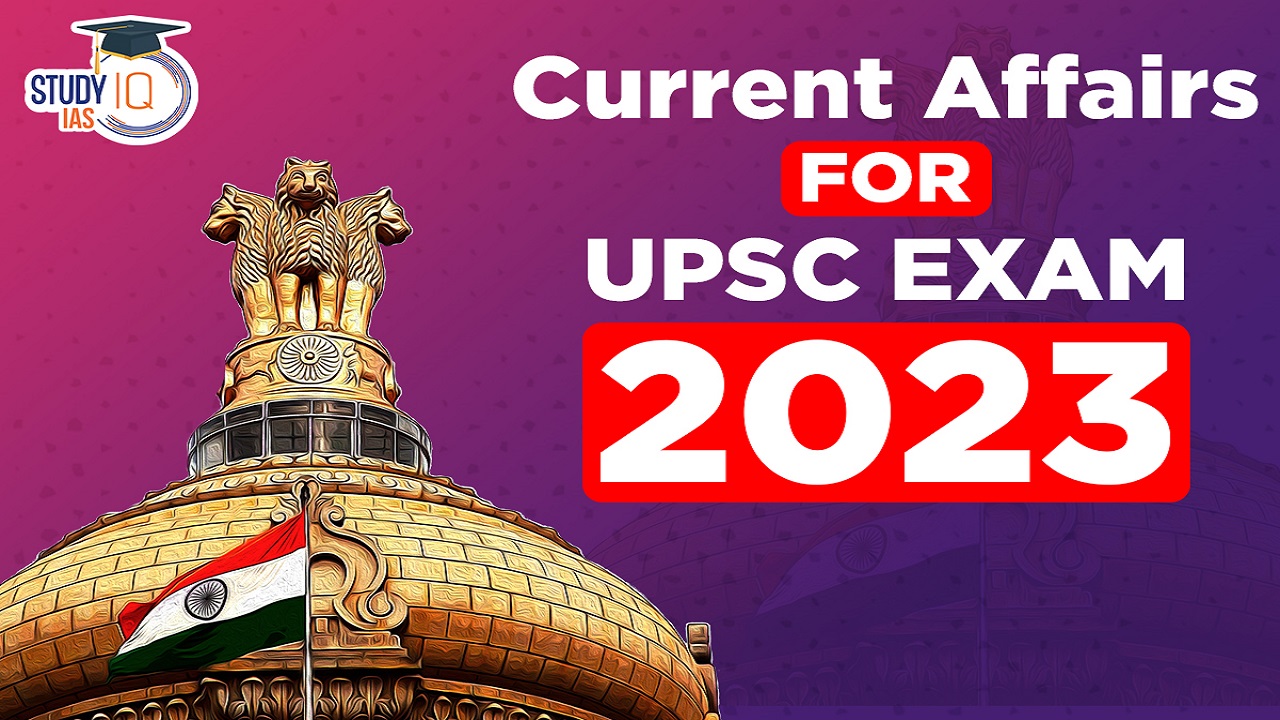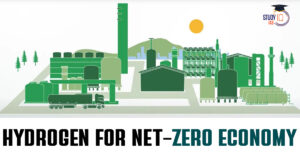Current Affairs 22nd June 2023 for UPSC Prelims Exam
National Commission for Protection of Child Rights (NCPCR)
Context: The National Human Rights Commission has issued notice to the West Bengal Government over the illegal recording of a National Commission for Protection of Child Rights (NCPCR) inquiry into a case and assault on the team by the police in Kolkata.
About National Commission for Protection of Child Rights (NCPCR)
- Definition: National Commission for Protection of Child Rights is a statutory body constituted under Section 3 of the Commission for Protection of Child Rights (CPCR) Act, 2005.
- Ministry: Ministry of Women & Child Development.
- Aim: NCPCR’s mandate is to ensure that all laws, policies, programmes, and administrative mechanisms are in consonance with the Child Rights perspective as enshrined in the Constitution of India and the UN Convention on the Rights of the Child.
- The child is defined as a person in the age group of 0 to 18 years.
- NCPCR also monitors effective implementation of:
- Protection of Children from Sexual Offences (POCSO) Act, 2012;
- Juvenile Justice (Care and Protection of Children) Act, 2015;
- Right to Free and Compulsory Education (RTE) Act, 2009.
Authority: NCPCR enquires into complaints about violation of the law.
- NCPCR has the powers of Civil Court.
- It also has the power to forward any case to a Magistrate having jurisdiction to try the same.
- It can summon and enforce the attendance of any person.
- It can recommend to the concerned Government for the grant of interim relief to the victim.
- Composition:
- A chairperson: who is a person of eminence and has done a outstanding work for promoting the welfare of children; and
- Six members, out of which at least two are woman, appointed by the Central Government from amongst person of eminence, ability and integrity.
Current Affairs 21st June 2023 for UPSC Prelims Exam
PM Gati Shakti National Master Plan (NMP) Portal
Context: The Union Government may soon open up access to the PM Gati Shakti portal developed for planning multi-modal infrastructure projects.
About PM Gati Shakti-National Master Plan (NMP)
- Definition: Gati Shakti is a digital platform that will bring 16 Ministries including Railways and Roadways together for integrated planning and coordinated implementation of infrastructure connectivity projects.
- Aim: The multi-modal connectivity platform will provide integrated and seamless connectivity for movement of people, goods and services from one mode of transport to another.
- It will facilitate the last mile connectivity of infrastructure and reduce travel time for people.

- Process:
- It will incorporate the infrastructure schemes of various Ministries like Bharatmala, Sagarmala, inland waterways, dry/land ports, UDAN etc.
- Economic Zones like textile clusters, pharmaceutical clusters, defence corridors, electronic parks, industrial corridors, fishing clusters, agri zones will be covered to improve connectivity & make Indian businesses more competitive.
- It will also leverage technology extensively including spatial planning tools with ISRO imagery developed by BiSAG-N (Bhaskaracharya National Institute for Space Applications and Geoinformatics).
- In line with goal of PM GatiShakti, entire “existing” Inter State Transmission System ( ISTS) lines have been mapped on the portal spanning across length and breadth of the country.
- Also, 90% “under construction” ISTS lines have also been integrated in the portal and remaining 10% ISTS lines are to be integrated after finalization of route survey by respective Transmission Service Providers.
- Pillars: 6 Pillars of GatiShakti: Connectivity for Productivity are:
- Comprehensiveness: Each department will have visibility of each other’s activities providing critical data while planning & execution of projects in a comprehensive manner.
- Prioritization: Through this, different Departments will be able to prioritize their projects through cross-sectoral interactions.
- Optimization: NMP will assist different ministries in planning for projects after identification of critical gaps.
- For the transportation of the goods from one place to another, the plan will help in selecting the most optimum route in terms of time and cost.
- Synchronization: Individual Ministries and Departments often work in silos.
- There is lack of coordination in planning and implementation of the project resulting in delays.
- PM Gati Shakti will help in synchronizing the activities of each department, as well as of different layers of governance, in a holistic manner by ensuring coordination of work between them.
- Analytical: The plan will provide the entire data at one place with GIS based spatial planning and analytical tools having 200+ layers, enabling better visibility to the executing agency.
- Dynamic: All Ministries and Departments will now be able to visualize, review and monitor the progress of cross-sectoral projects, through the GIS platform.
- The satellite imagery will give on-ground progress periodically and progress of the projects will be updated on a regular basis on the portal.
- It will help in identifying the vital interventions for enhancing and updating the master plan.
- Significance: PM GatiShakti NMP portal outlines the vision for infrastructure development in India including “Power” in general and “Transmission” in particular, which strengthens the energy life-line of the country.
- It would be a game changer providing multi-modal connectivity of infrastructures to various economic zones by leveraging technology extensively including spatial planning tools, fulfilling the objective of “Atmanirbhar Bharat”.
- It also provides “One-click Comprehensive view” to steer and simplify the planning & implementation process by reduction of time and cost of implementation in Power transmission projects.
- It would also aid in improving logistics efficiency through single digital platform & multi-modal portal.
- This portal will ultimately aid in solving problems of development of infrastructures in the country by building secure, sustainable, scalable and collaborative approach towards infrastructure planning for seamless connectivity to economic zones.
- In development of Power Transmission projects, PM GatiShakti NMP portal shall play critical role in Planning, Tendering, Implementation and Approval stages.
- This portal will help India take giant stride towards evolving into 5 trillion dollars economy while enabling reliable “Power to All”.
- The private players are hoping that the government might agree to open access to the PM Gati Shakti portal which will facilitate greater private capital investments especially in connectivity projects that are seen as critical to sustain the economy’s momentum.
NATO Plus
Context: A powerful American Senator has said he plans to introduce a bill to make India part of the NATO Plus grouping.
About NATO Plus
- Definition: It is a grouping of the North Atlantic Treaty Organization (NATO) and five countries, including Australia, New Zealand, Japan, Israel, and South Korea.
- Aim: It aims to boost defence and intelligence ties.
- Advantages for India by becoming a member of NATO Plus:
- India would gain access to seamless intelligence sharing between these countries.
- It seeks to build on India’s shared interest in thwarting Chinese hegemonic plans in Indo-Pacific.
- India would get access to the latest military technology without much of a time lag.
- It would further strengthen India’s defence partnership with the United States.
- The inclusion of India in the NATO Plus would also strengthen global security.
- Disadvantages for India by becoming a member of NATO Plus:
- If India joins the US-led NATO alliance which is backing Ukraine in the current war with Russia, it will directly impact New Delhi’s strong, established and deep ties with Moscow.
- The US wants to cut off Russia and gain India’s defence deals and benefit from its strategic location in the Indo-Pacific.
- NATO membership may also affect India’s strategic autonomy over its nuclear arsenal.
- A European Parliament report on EU strategic autonomy 2013-2023 mentioned how European nations fear that increasing their strategic autonomy may lead to constraints in free trade.
- Till now, India does not host any foreign military base on its turf but joining NATO Plus would mean the US will eventually have a military base in India as well.
- Other NATO plus members have US military bases today: JAPAN – 24, SOUTH KOREA – 15, AUSTRALIA – 2, ISRAEL – 1.
- Being part of NATO would essentially mean that India will get dragged into America’s conflicts.
- It is to be noted that the US congressional report is recommending joint plans between the US and its allies to enact severe economic sanctions on China for which it also wants India on its side.
- But the irony is that US own trade with China, has actually surged in the previous year to an all-time high of $690.6Bn. Both Imports and Exports have increased.
- Imports from China have increased to $536.8bn and exports to China have increased to $153.8bn.
- If India joins the US-led NATO alliance which is backing Ukraine in the current war with Russia, it will directly impact New Delhi’s strong, established and deep ties with Moscow.
North Atlantic Treaty Organization (NATO)
- It is a transatlantic alliance of 31 like-minded North American and European countries.
- It was established by the North Atlantic Treaty (also called the Washington Treaty) on April 4, 1949.
- It aims to protect peace and to guarantee the territorial integrity, political independence and security of the member states.
- Article Five of the treaty: If an armed attack occurs against one of the member states, it should be considered an attack against all members, and other members shall assist the attacked member, with armed forces if necessary.
- Headquarters: Brussels, Belgium.
India’s Jet Engine Deal with the U.S
Context: A mega defence deal for the manufacture of fighter jet engines in India is expected to dominate the agenda of the Indian Prime Minister’s ongoing visit to the United States.
About the Deal
- The deal that will allow American manufacturing company General Electric (GE) Aerospace to share critical technology with Hindustan Aeronautics Limited (HAL) for the joint production of GE-F414 jet engines that will power indigenous Light Combat Aircraft (LCA) Tejas Mk-II.
- The Indigenous LCATejas Mk-II is a fighter aircraft developed in India that can carry eight Beyond-Visual-Range (BVR) missiles simultaneously, along with integrating all native weapons and advanced weapons from other countries.
- According to media reports, the U.S. has agreed to transfer ~80% of the tech value to India, which is unprecedented.

Features of the F414 engine
- Thrust: The F414 engine generates a thrust of approximately 22,000 pounds (98 kilonewtons), which is 35% more than the F404 engines. The afterburner technology enables short bursts of increased thrust, enhancing the aircraft’s take-off, climb, and combat performance.
- Thrust-to-Weight Ratio: The engine has a thrust-to-weight ratio of 9:1. This ratio is an indicator of the aircraft’s propulsion capability. A higher thrust-to-weight ratio allows for better acceleration, excess thrust, and rate of climb.
- Full Authority Digital Engine Control (FADEC): The F414 engine includes a fully digital electronic system called FADEC. This system controls various aspects of the engine’s operation, optimizing performance, efficiency, and reliability.
- Single-Engine Safety Features: The F414 engine is customized to meet the specific defense requirements of India. It incorporates single-engine safety features, ensuring reliability and safety in combat scenarios.
- Maintenance and Durability: The engine is designed to have low maintenance costs and offers high reliability and durability. It has demonstrated unrestricted engine performance on demand, accumulating more than five million engine flight hours.
- Life-Cycle Cost: The F414 engine is built to maximize time on wings, meaning it is designed for operational reliability. This feature reduces the overall life-cycle cost of the engine, making it more cost-effective for military applications.
Significance of The Deal for India
- Enhanced military capabilities through advanced jet engine technology.
- Promotion of indigenous defense manufacturing and self-reliance.
- Growth and job creation in the aerospace and defense industry.
- Strengthened defense ties with the United States.
- Support for India’s quest for strategic autonomy and regional stability.


 AI and its Regulation in India, Limitati...
AI and its Regulation in India, Limitati...
 Hydrogen For Net-Zero Economy, Governmen...
Hydrogen For Net-Zero Economy, Governmen...
 Mantis Shrimp - Latest Research News and...
Mantis Shrimp - Latest Research News and...





















